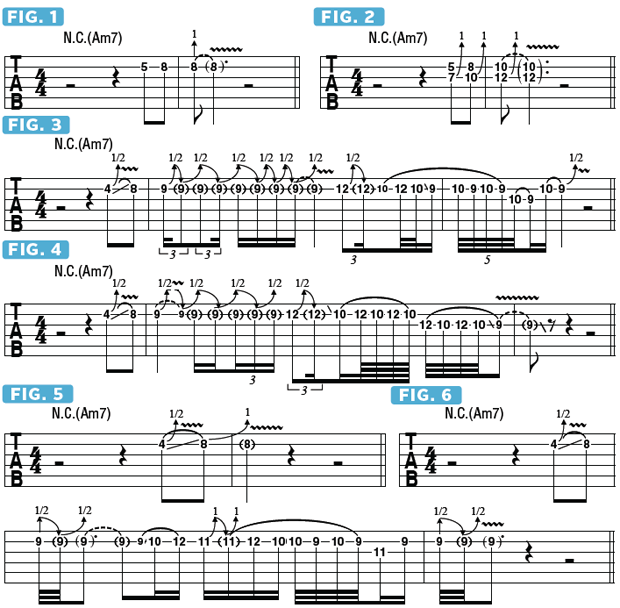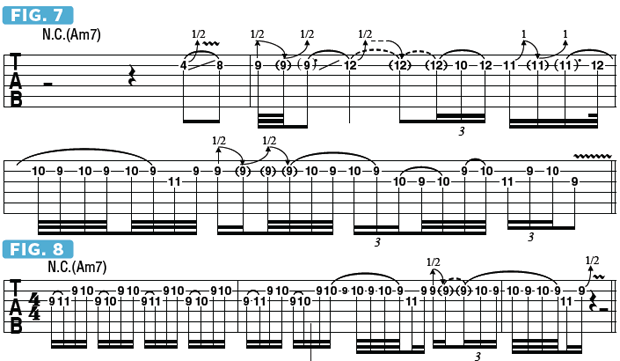Full Shred with Marty Friedman: Using String-Bending and Vibrato to Personalize a Melody
Marty Friedman details a few of the string-bending and vibrato techniques he uses and their best musical applications.
Two of the most essential techniques for all aspiring guitarists to master are string bending and vibrato.
The electric guitar affords us the opportunity to express musical statements that can evoke and rival the sound and qualities of the human voice, with string-bending and vibrato techniques as the primary elements necessary to achieve vocal-like sounds and phrasing.
In this column, I’d like to detail a few of the string-bending and vibrato techniques I use and the applications that appeal to me the most.
You can bend a string in many ways, and I like to employ just about every method imaginable. Drawing from a variety of string-bending techniques provides me with more options for how to interpret whatever I’m playing.
Let’s begin with a simple melody, and I’ll then demonstrate a handful of ways I might interpret it. FIGURE 1 illustrates a very simple three-note phrase in A minor, comprising the notes E (the fifth) and G (the flatted seventh) and ending with a bend from G up one whole step, to the A root note. A common approach many guitarists take is to employ a unison bend for each note, as demonstrated in FIGURE 2.
While one note is fretted with the index finger on the B string, another is fretted with the ring finger two frets higher, on the G string, and that note is then bent up a whole step to match the pitch of the B-string note.
If you ever hear me play this unison bend lick, please shoot me. We just don’t need another guitar player playing that way anymore. But if you like it, you should play that way; just don’t let me play that way. FIGURE 3 shows one of the many “Marty-style” options available when playing these three notes. Instead of simply fretting the first note, I place the index finger one fret lower and bend up to it from a half step below, from D# to E, then apply vibrato to the note. I then slide up to the G and execute half-step bends (and releases) between G# and A. It’s a nice alternative to simply fretting the note.
I then move up to B and bending up a half step, to C, and then I release the bend and perform a series of quick hammer-pulls between A and G# on the B string.
There are so many variations one could apply from here, and I’ve detailed a handful in FIGURES 4–8. I encourage you to use your musical ear and listen for variations and options that you find interesting.


Get The Pick Newsletter
All the latest guitar news, interviews, lessons, reviews, deals and more, direct to your inbox!








![Joe Bonamassa [left] wears a deep blue suit and polka-dotted shirt and plays his green refin Strat; the late Irish blues legend Rory Gallagher [right] screams and inflicts some punishment on his heavily worn number one Stratocaster.](https://cdn.mos.cms.futurecdn.net/cw28h7UBcTVfTLs7p7eiLe.jpg)

